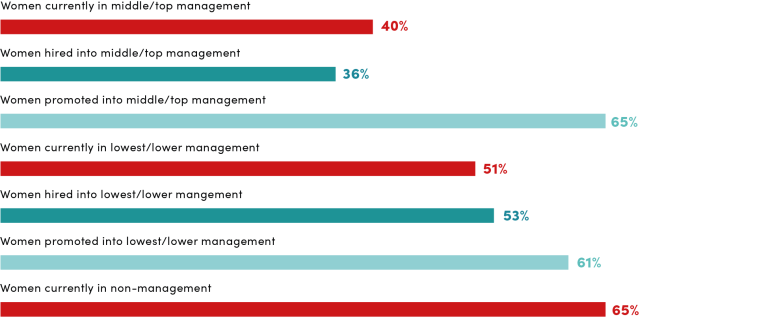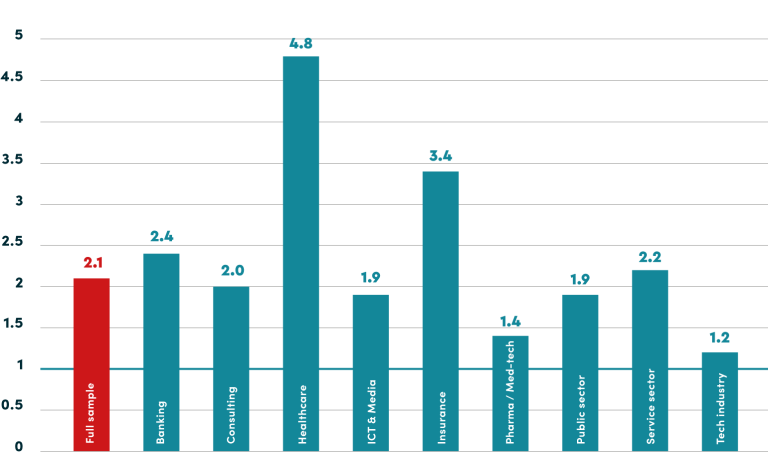In the service sector, the share of women decreases by 30 percentage points from non-management to top management. In non-management, women make up a clear majority with 65%. This is also true for lowest management, where 57% of employees are female. As in many other sectors, most of the drop in the proportion of women occurs between lowest and lower management. The share of women in lower management is 44%, which is 13 percentage points below that of lowest management. Interestingly, the proportion of women in middle management is one percentage point higher than in lower management. A further 10 percentage points are lost between middle and top management. The proportion of women, at 35%, is relatively high compared to other industries.
In the service sector, women are more often considered for promotions than for external recruitment. In lowest/lower management, 61% of promotions go to women. This figure is 10 percentage points higher than the current share of women in these positions but 4 percentage points below the share of women in the pipeline (non-management). For external recruitment into these roles, the share of women is 53%, which is 2 percentage points above the current level in these positions but 12 percentage points below the pipeline share.
In middle/top management, the gap between promotions and recruitment is even more striking. Women account for 65% of promotions, but only 36% of new hires. While promotions can help increase the share of women in middle/top management, recruitment does not support this development. The reason: the recruitment rate of 36% falls below the current share of women in middle/top management (40%).

The Glass Ceiling Index of 2.2 in the service sector indicates that women face barriers when aiming for upper management levels. With this value, the service sector ranks roughly in the middle compared to other industries.

From lower to top management, high employment rates are the norm in the service sector. In these levels, both women and men work at average employment rates of at least 94%. The largest gender difference is seen in non-management. Women in these positions work an average of 83%, which is 11 percentage points lower than the average for men. In lowest management, the gender gap is 8 percentage points. Men in the service sector rarely work part-time, and their average employment rates are high compared to other industries.